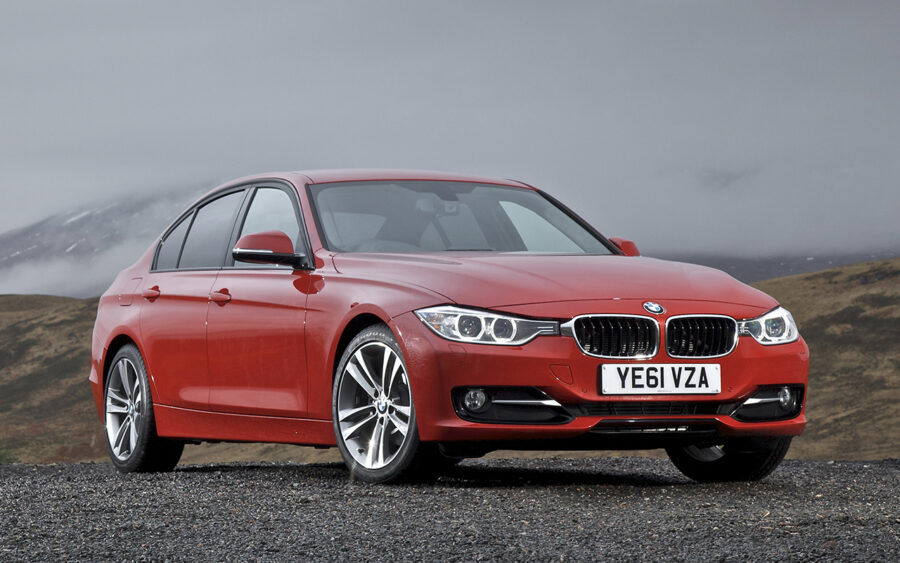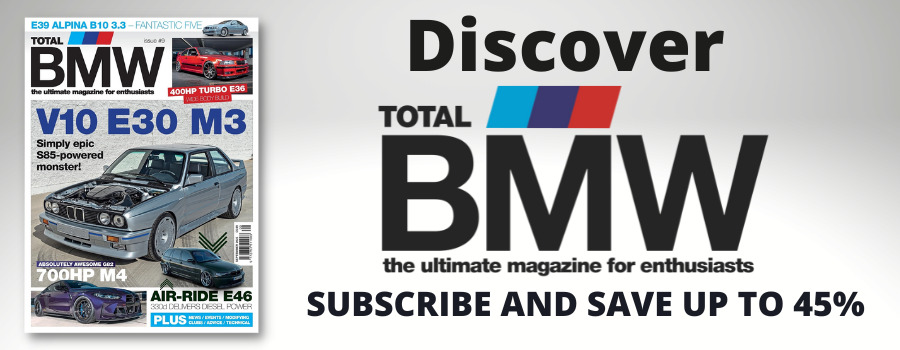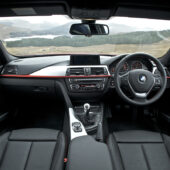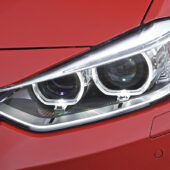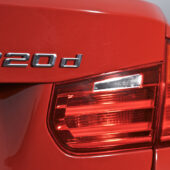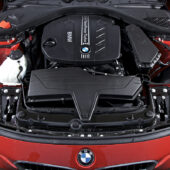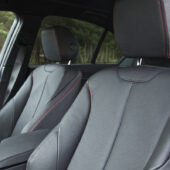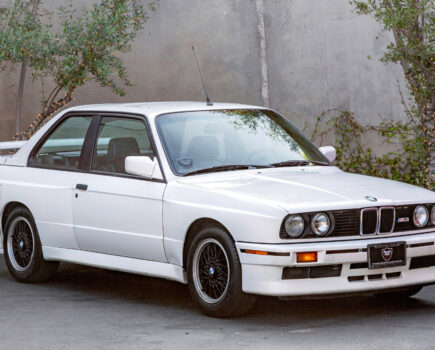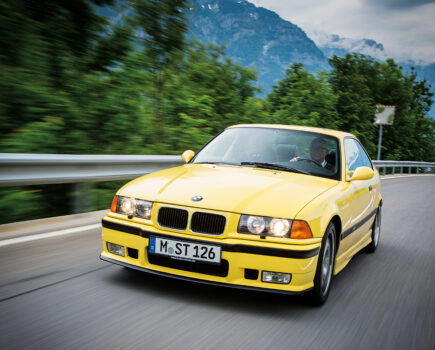The F30 3 Series represented a big step forward over its long-serving E90 predecessor. Here’s the full story
Words: Bob Harper Images: BMW
It seems barely possible that the F30-generation 3 Series is celebrated its 10-year anniversary in 2021; incredibly, the still-modern feeling sixth iteration of the iconic executive saloon first rolled off the line at the Munich plant back in 2011.
The arrival of a new 3 Series is always an important time for BMW and a defining moment in its history; the model helps define how the entire BMW range is viewed by both the press and the buying public. When the F30 was launched the 3 Series saloon accounted for one fifth of all BMWs sold so it was a model that BMW really couldn’t afford to get wrong.
As you’d expect there was quite the fanfare to accompany the launch of the new car and BMW had plenty to shout about, claiming “The new BMW 3 Series Saloon is a car of contradictions: larger and more spacious than the model it replaces, but lighter; quicker in many cases, but more fuel-efficient; and more nimble and agile while even safer. There have been big steps forward in style, quality, comfort and specification for only a minimal price increase.”
There were a number of firsts for the 3 Series too, with an engine line-up that was exclusively turbocharged, electro-mechanical power steering across the board as well as an eight-speed automatic gearbox option and previously unavailable options such as a head-up display being offered to customers to for the first time.
It was great when it was new and is still a brilliant used buy with a large number of examples to choose from with a variety of differing engines and trim levels there’s more or less an F30 3 Series to suit every driver whether you’re looking for the ultimate in economy or feel the need for speed.
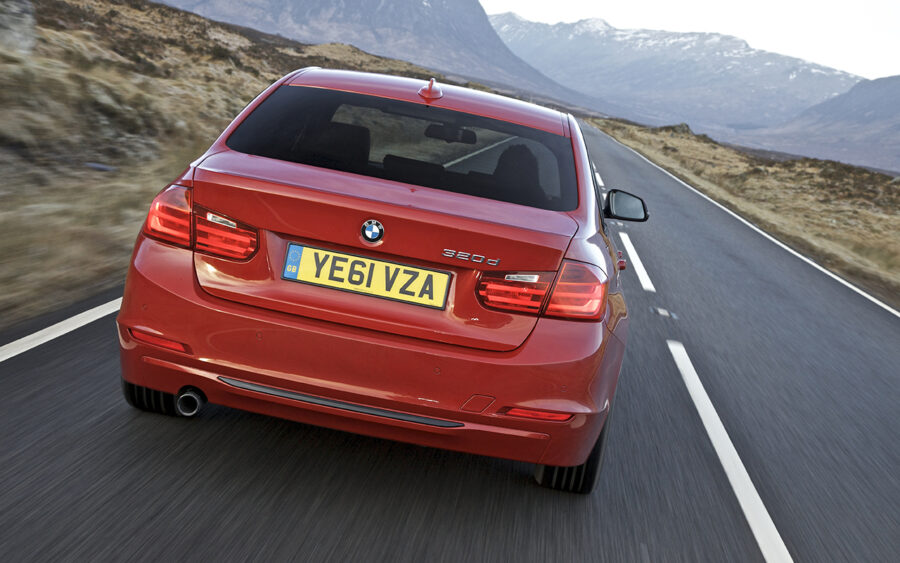
The F30 was first revealed in October 2011, made its motor show debut in Detroit in January 2012 and went on sale in February that year in just about all the world’s major markets. While BMW generally experiments with its design language with less mainstream models it usually plays it fairly safe with the 3 Series and that was certainly true of the F30. It was neatly styled – nothing too outlandish for this vital sector of the market – and was instantly recognisable as a BMW and as a 3 Series.
What was most obvious was that the F30 had grown considerably, with the latest machine being 93mm longer than the outgoing car and with 50mm of that extra length going into the wheelbase it came as no surprise that the F30 offered more spacious accommodation than before, particularly for rear seat passengers.
The new car also featured a stiffer body and an all-new chassis with widened front and rear track (37 and 47mm respectively) in the quest for even better driving dynamics but also to move even the smaller wheels to the edges of the wheel arches for improved aesthetics. The boot was bigger too – up 20-litres to 480 – but even though the Three had increased in size BMW reckoned it weighed either the same or up to 50kg less than the old car depending on options and specification.
It was perhaps inside that the greatest steps forward were made for the F30 with a much more upmarket feel than previous generation. The increased rear accommodation made it feel more spacious than BMW’s figures might have suggested as 15mm more knee room and 8mm of additional headroom might not sound much, but it definitely felt better than before. The dash layout and design seemed to have taken their design cues from the contemporary 5 and 6 Series and with a slight angle towards the driver it felt sporty enough, too. All models featured a 6.5-inch monitor sitting on top of the dash and if Professional navigation was specified the screen grew to 10-inches. The quality of trim was a step up on the previous E90 generation, too.
When the F30 was launched the entire 3 Series Saloon line-up featured turbocharged power units and comprised of one six-cylinder and three four-cylinder engines – 320d, 320d EfficientDynamics, 328i and 335i and these were closely followed by the 316d, 318d and 320i in March 2012.
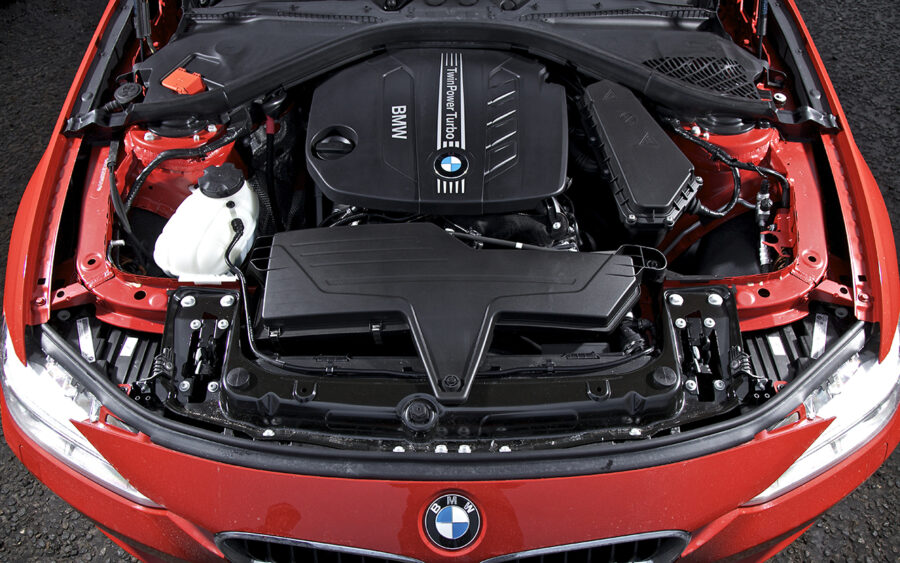
All the four diesels used the same 1995cc engine, but in different states of tune, with power outputs ranging from 116hp to 184hp. The 320d EfficientDynamics was particularly noteworthy, offering 163hp, 280lb ft of torque, an 8.0-second 0-62mph time and a top speed of 143mph, while emitting just 109g/km of CO2 and returning 68.9mpg on the combined cycle.
Of the petrol models, both the 320i and the 328i came with the four-cylinder twin-scroll turbocharged N20 with outputs of 184hp and 245hp respectively, offering 0-62mph times of 7.3- and 5.9-seconds, while the 328i has a combined economy figure of 44.1mpg. The 335i used the same basic engine as the outgoing model but offered better performance economy and emissions, especially when hooked up to the automatic gearbox.
All F30 Threes came as standard with a six-speed manual with an automatic being an option, and this self-shifter had eight ratios making the auto models particularly efficient. There was more good news for buyers of the 320d EfficientDynamics, as for the first time this model was available with the eight-speed auto.
Further models joined the line-up later in 2012 – the 316i, the 320i EfficientDynamics, the 330d, the 320i xDrive and the Active Hybrid 3. The all-wheel drive 320i xDrive became the first 3 Series saloon to be offered in the UK with this type of drivetrain while the Active Hybrid 3 was the 3 Series’ first foray into hybrid power. The combination of the 335i’s turbocharged straight-six and an electric motor offered excellent performance – 0-62mph took just 5.3-seconds – but it’s 2.4-mile all electric range meant that this wasn’t really designed with the eco warrior in mind.

Brawnier diesel models also joined the fray, the 330d in mid-2012 and the 335d in 2013, along with a middle-ground option, the 325d. While the 335d offered the ultimate in performance it could only be ordered with xDrive so those after traditional rear-wheel drive thrills were limited to the 330d (which could be specced with xDrive, too), but it was still a hugely impressive machine. The 330d was only offered with the eight-speed auto but with 258hp and 413lb ft of torque. It knocked off the 0-62mph dash in just 5.6-seconds yet returned a combined fuel economy of 57.6mpg and CO2 emissions of just 129g/km.
So there was an extensive engine line-up (and we haven’t even got to the LCI models yet!) but there was an equally extensive selection of trim levels to choose from. ES models (only available on the 316i and 316d) were a little bit down on spec but still received auto air, 17-inch alloys, keyless go, cruise, Bluetooth, iDrive and a USB audio interface, but you’d have been better off with an SE spec machine. This added 17-inch Star-spoke style 393 alloys with run-flat tyres, auto air-con (two zone), an auto dimming rear-view mirror, rear PDC and a rain sensor with auto headlight activation. On the 328i and above, SE spec also added Extended lighting, front PDC and Servotronic steering.
New for the 3 Series were Sport, Modern and Luxury trim levels which all aimed to give the car a different feel and ambiance. Sport was perhaps the most convincing with unique-to-the-model 17-inch alloys, black high-gloss air intakes with redesigned bumpers, sports seats with red stitching, a Sport leather steering wheel and further sporty detailing. Modern was the least successful with matt chrome highlights and a two-tone Oyster interior – it was quietly dropped when the F30 received its facelift. The Luxury models majored on lashings of chrome, gloss wood interior trim and leather seats while M Sport featured the expected array of M aerodynamics, wheels, leather sports seats and sport suspension.
The major change for the F30 came mid-2015 when the car underwent its mid-life refresh. Exterior upgrades weren’t ground-breaking with minor styling tweaks to the bumpers along with restyled head and tail lights which featured increased use of the now de rigueur LEDs. Inside there were some updated components but it was under the skin that the most important changes were to be found.
Virtually the entire engine line-up was revamped with the new modular B class family of engines, with just the 330d and 335d retaining previously used units. For the first time in the 3 Series a three-cylinder engine was used for the new entry-level petrol model, the 318i, which effectively replaced the 316i. It punched above its 1499cc weight and with 136hp it could just dip below the nine second mark from rest to 62mph and thanks to its relatively light weight was actually quite entertaining to drive.
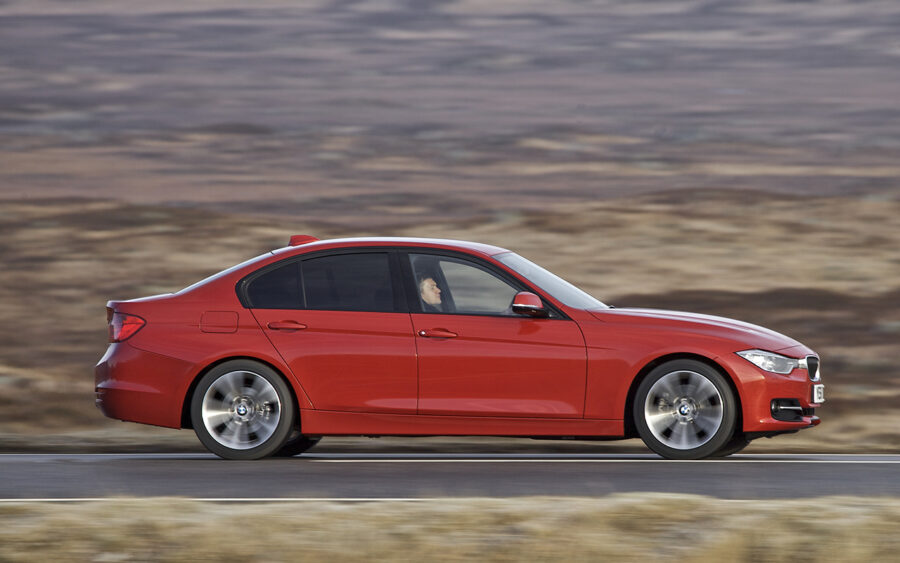
For the 320i the N20 was ditched and replaced with the B48 2.0-litre turbocharged four-cylinder unit that developed 184hp and 214lb ft of torque which gave it a 7.2-second 0-62mph time yet offered around 50mpg on the official combined cycle. The same engine, but in a different state of tune, was used in the 330i which replaced the 328i. With 252hp and 258lb ft and it could reach 62mph from rest in just under six seconds in manual Saloon form. Top dog in the petrol line up was the new 340i which was the first BMW to receive the new B58 modular version of the six-cylinder petrol unit. With a swept volume of 2998cc it developed the same 326hp and 332lb ft of torque and was good for a 5.1-second 0-62mph time.
The 316d, 318d, 320d and 320d EfficientDynamics all used the new B47 unit to replace the old N47 and had outputs ranging from 116hp and 190hp and offered up to 72.4mpg. The 320d EfficientDynamics managed to dip below the magic 100g/km CO2 barrier (when spec’d as an auto) which made it a very popular company car choice. The last two diesels, the 330d and 335d xDrive used tweaked versions of the previous N57 engine with outputs of 258 and 313hp respectively. Both were popular models.
The LCI models also saw changes to their suspension and steering to enhance their sporting credentials while both the eight-speed auto and six-speed manual ‘boxes featured minor revisions, including rev matching on the manuals when changing down the ‘box.
The last major arrival was the debut of the 330e in 2016. It combined a four-cylinder petrol engine with an electric motor for a combined output of 252hp and an official combined economy of up to 148mpg and CO2 emissions as low as 44g/km. It has an electric range of up to 25-miles but the battery pack did rob some boot space, dropping its capacity to 370-litres which did blunt its practicality a little.
The F30 was eventually replaced by the new G20 model in early 2019.
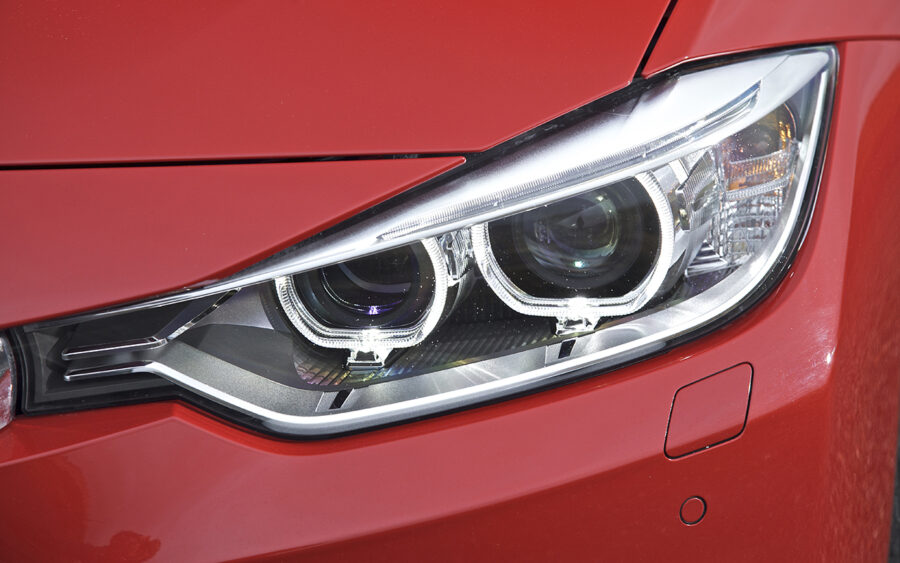
BMW 3 Series (F30) timeline
2011
New F30-generation BMW 3 Series unveiled
2012
Car makes its debut at the Detroit Motor Show in January. BMW 320d, 320d EfficientDynamics, 328i and 335i available from launch
BMW 316d, 318d and 320i launched in March
BMW 330d, 316i, 320i EfficientDynamics 330d, 320i xDrive and Active Hybrid 3 arrive later in 2012
2013
BMW 335d added to the F30 range
2014
M3 arrives, known by the F80 model code, using turbocharged power for the first time
2015
F30 gets a mid-life refresh including minor styling tweaks and a new range of modular B-prefix engines
First ever three-cylinder 3 Series introduced as the 318i, replacing the 316i
2016
BMW 330e plug-in hybrid arrives
2019
BMW 3 Series progresses to its G20 generation

